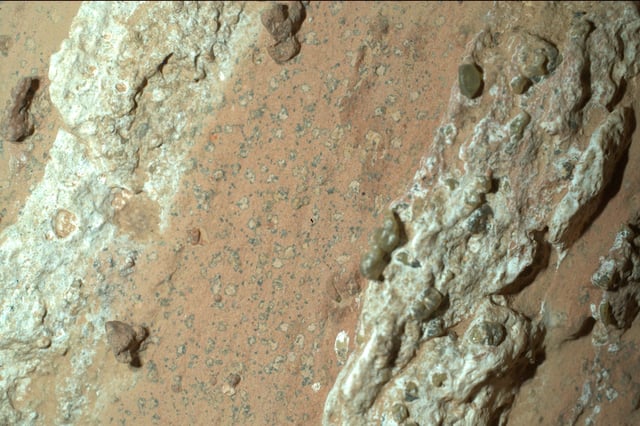Overview
- Peer-reviewed analyses and NASA statements describe patterned textures in Jezero’s Bright Angel formation as a potential biosignature based on co-located organic carbon with vivianite and greigite.
- Rover instruments SHERLOC and PIXL mapped nodules and reaction fronts consistent with redox chemistry often tied to microbial metabolisms on Earth, though abiotic routes remain possible.
- A separate mineral survey using PIXL and the MIST method identified 24 minerals recording at least three distinct wet episodes—acidic, neutral, and low-temperature alkaline—indicating recurring habitable conditions.
- The Sapphire Canyon core from the patterned outcrop is sealed on board Perseverance and is prioritized for return to enable isotope and microstructural tests that the rover cannot perform.
- New critique from geoastronomer Stephen Mojzsis argues the chemistry could arise without life, as study authors welcome further scrutiny, while debates over Mars Sample Return costs and planetary-protection rules underscore uncertainty about when confirmation will be possible.



